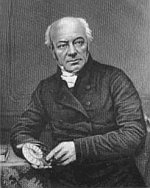175 = 11 + 72 + 53
Author: Greg Ross
Hunger Is the Best Sauce
During the siege of Paris, the city’s starving populace ate its horses, dogs, and cats, and eventually even turned to rats and zoo animals. In Paris in Its Splendor (1900), Eustace Reynolds-Ball gives the menu of a popular restaurant in the Latin Quarter at the beginning of January 1871, “which gives a good idea of the gastronomic straits to which the light-hearted Parisians were reduced”:
- Consommé de Cheval au millet.
- Brochettes de foie de Chien à la maître d’hôtel.
- Emincé de rable de Chat. Sauce mayonnaise.
- Epaules et filets de Chien braisés. Sauce aux tomates.
- Civet de Chat aux Champignons.
- Côtelettes de Chien aux petits pois.
- Salmis de Rats. Sauce Robert.
- Gigots de chien flanqués de ratons. Sauce poivrade.
- Begonias au jus.
- Plum-pudding au rhum et à la Moelle de Cheval.
See also Balloon Mail.
Unquote

A new student once asked Euclid, “But what shall I get by learning these things?”
The geometer called his slave and said, “Give him three obols, since he must make gain out of what he learns.”
Got That?
Now, that is a word that may often be joined,
For that that may be doubled is clear to the mind;
And that that that is right, is as plain to the view,
As that that that that we use, is rightly used, too,
And that that that that that line has in it, is right–
In accordance with grammar — is plain in our sight.
— Charles Carroll Bombaugh, Gleanings for the Curious from the Harvest-Fields of Literature, 1890
Determined Optimism

Every March 15, flocks of buzzards converge on Hinckley Township, Ohio.
The town has named it “Buzzard Day,” marking the return of spring.
Capsule Summary
On May 17, 1817, Samuel Jessup died. That was bad news for his apothecary, who had been suing him over an unpaid bill — over the course of 21 years, Jessup had taken 226,934 pills, an average of 10,806 a year. Between 1812 and 1816 he took 78 pills a day, 51,590 in 1814 alone. With the addition of 40,000 bottles of mixture, juleps, and electuaries, the druggist’s bill filled 55 closely written columns.
Despite all this — or perhaps because of it — Jessup lived to age 65.
The Three Cards Problem
I show you three cards. One is white on both sides, one is black on both sides, and one is white on one side and black on the other. I shake them in a hat, remove one at random, and place it on a table. The side that’s face up is black. What’s the probability that the other side is also black?
Hint: It’s not 1/2.
Animal Lover

Paleontologist William Buckland (1784-1856) proposed to eat his way through the animal kingdom — he served panther, crocodile, and mouse to his dinner guests, and he claimed that the most unpleasant dishes he had tried were mole and bluebottle.
Raconteur Augustus Hare recalled that at Nuneham Buckland was presented with the heart of a French king in a silver casket: “Whilst looking at it he exclaimed, ‘I have eaten many strange things, but have never eaten the heart of a king,’ and before any one could hinder him he had gobbled it up, and the precious relic was lost for ever.”
Easy Money
In July 1891, an engineer named Charles Wells went to Monte Carlo with £4000, broke the bank 12 times in 11 hours, and came away with a million francs.
He returned in November and made another million.
The casino never discovered his system.
Fair Enough
A man of the name of Desjardins was tried on his own confession, for having admitted that he was an accomplice of Louvel, the assassin of the Duke de Berri. The case was clearly proved. Desjardins set up, as his defence, that he was so notorious for his falsehood, that nobody could give credit to a word he said, and produced a whole host of witnesses, his friends and relatives, who all swore to the fact with such effect, that he was declared Not Guilty.
— Annual Register, 1822
